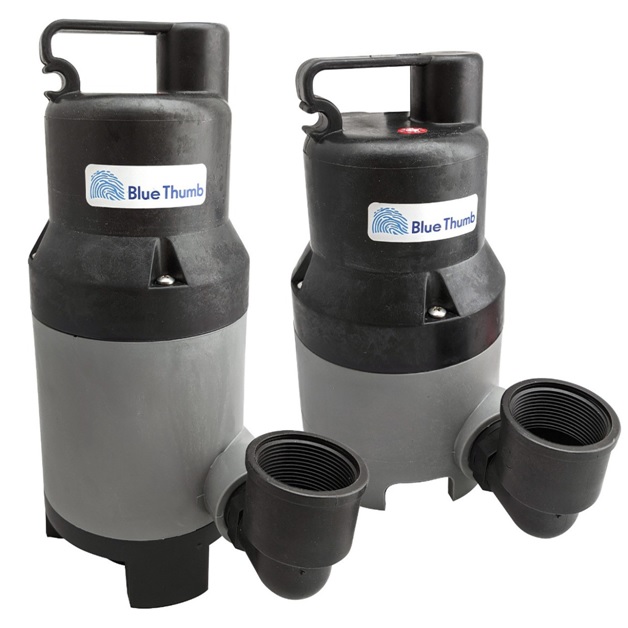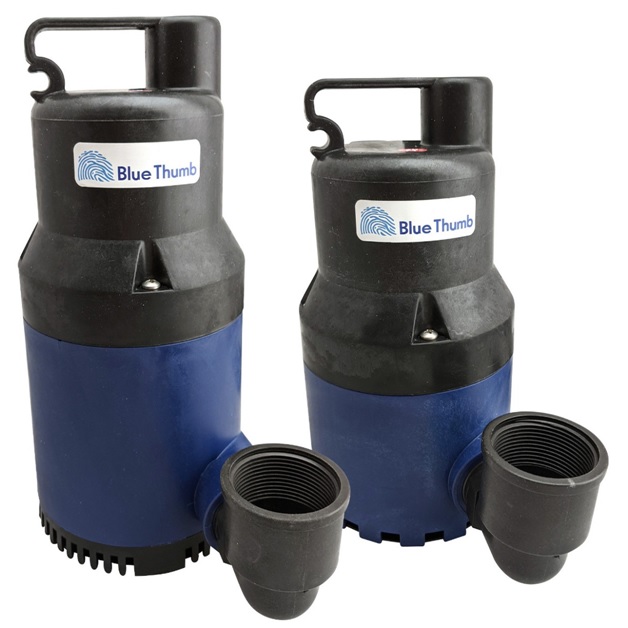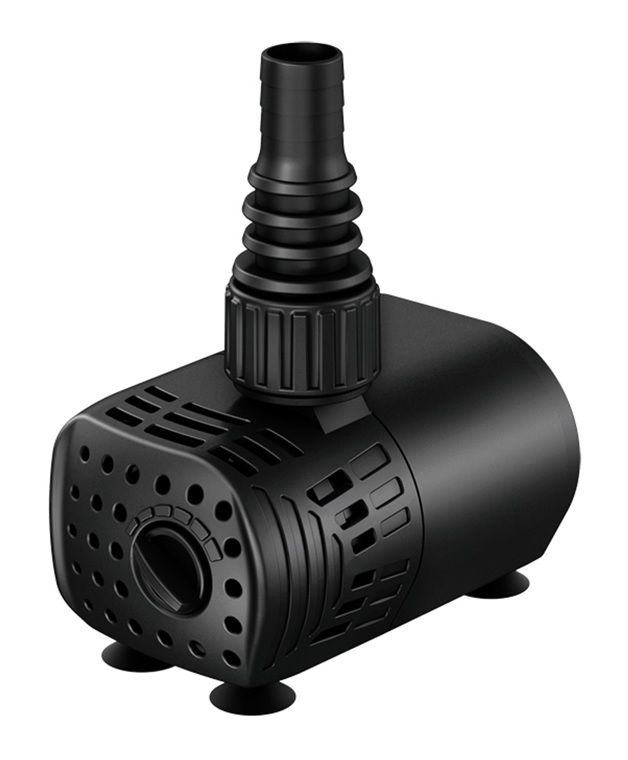Posted by Blue Thumb on Jun 5th 2024
Fishkeeping Fundamentals: Setting Up and Maintaining a Healthy Fish Pond
Have you built a beautiful garden pond but are unsure about adding fish? Fishkeeping can seem daunting, especially for beginners. But with the right knowledge and setup, maintaining a healthy fish pond can be a breeze.
Today, we’ll tackle some of the key factors to consider before introducing fish, including selecting the right pump, maintaining water quality, and creating a healthy habitat for your finned companions.
The Foundation: How to Select Your Fish Pond and Pump
The first step is choosing the right pond for your needs. Size matters – a small pond can quickly become overcrowded, leading to poor water quality and stressed fish. A good rule of thumb is to allow at least 100 gallons of water per goldfish and 250 gallons per koi.
Now, let's talk about the heart of your pond – the fish pond pump. A good fish pond pump performs several crucial functions:
- Circulation: The pump keeps the water moving, preventing stagnation and ensuring proper oxygen distribution throughout the pond.
- Filtration: Many pumps integrate with filtration systems, removing harmful toxins and debris from the water.
- Water Features: If you plan on having a waterfall or stream, the pump will provide the power to create these beautiful visual elements.
When selecting a fish pond pump, consider the size of your pond, the desired flow rate, and any additional features you might need. We offer a variety of fish pond pumps to suit any size pond and budget. Here's a breakdown of some of our options:

1. Solids Handling Pump (2160-3840gph)
This workhorse pump is a reliable choice for medium to large ponds (think 2000 gallons and up) with heavy fish loads or demanding filtration systems.
It boasts a high flow rate (2160-3840 gallons per hour) and can handle solid waste up to 1.25 inches in diameter, making it ideal for ponds with bottom feeders or heavy debris like leaves. The water-cooled design ensures efficient operation and extends the lifespan of the pump.
This is a great option if you have a large, established pond with a heavy fish population and require strong circulation and waste removal.

2. Clear Water Pump (1800-4200gph)
Similar to the Solids Handling Pump, the Clear Water Pump is another dependable option for medium to large ponds. It offers a slightly lower flow rate (1800-4200gph) but is still well-suited for ponds with moderate to heavy fish loads and filtration needs.
This pump is not designed for handling large debris, so it's ideal for ponds with minimal leaf litter or bottom feeders. The water-cooled design ensures quiet operation and energy efficiency.
Choose this pump if you have a medium to large pond with moderate fish stocking and require good water circulation without needing the extra waste handling capacity of the Solids Handling Pump.

3. Mini Mag-Drive Pump (120-180gph)
Looking for a pump for a smaller water feature or a fountain in your fish pond? The Mini Mag-Drive Pump is a compact and energy-efficient option for ponds up to 500 gallons.
This pump boasts a variable flow rate (120-180gph) allowing you to adjust the water movement to your preference. The magnetic drive technology ensures quiet operation and lower energy consumption compared to traditional pumps.
This pump is ideal for small ponds, fountains, or aquariums and provides exceptional value for money.
Creating a Thriving Ecosystem: Setting Up Your Fish Pond
Once you have your pond and pump, it's time to create a healthy habitat for your fish. Here are some key elements:
- Liner: Use a high-quality pond liner designed specifically for fish ponds. This will prevent leaks and ensure the longevity of your pond.
- Substrate: Gravel or pebbles are ideal choices for the bottom of your pond. They provide a natural habitat for some fish species and help with biological filtration.
- Plants: Submerged and marginal plants are essential for a healthy fish pond. They provide oxygen, absorb nutrients, and offer hiding places for fish. Choose plants suited to your climate zone and water depth.
- Water Conditioning: Before adding fish, test your tap water and use appropriate water conditioners to remove chlorine and chloramines, which are harmful to fish.
Keeping Your Fish Pond Pristine: Essential Maintenance Tips
Maintaining a healthy fish pond requires regular care. Here's a breakdown of some essential tasks:
- Water Changes: Perform partial water changes (around 10-20% of the total volume) every two to four weeks, depending on the size of your pond and fish population. This removes built-up waste products and keeps the water fresh.
- Filtration Maintenance: Clean your filter media regularly according to the manufacturer's instructions. A clogged filter can lead to poor water quality and fish health problems.
- Testing Water Parameters: Regularly test your pond water for factors like pH, ammonia, nitrite, and nitrate levels. These parameters can fluctuate and need to be within a healthy range for your fish to thrive. Blue Thumb offers water testing kits and can help you interpret the results.
- Fish Pond Pump Care: Your fish pond pump is a vital piece of equipment, so proper maintenance is crucial. Regularly clean the pump impeller to prevent debris buildup, which can reduce its efficiency. Some pumps may require additional maintenance depending on the model. Refer to the manufacturer's instructions for specific cleaning procedures.
Build Your Fish Pond Paradise
By following these fishkeeping fundamentals and providing regular care, you can create a thriving fish pond that will be a source of enjoyment for years to come. Check out our available fish pond pumps and kits here at Blue Thumb and create your dream fish pond paradise.

